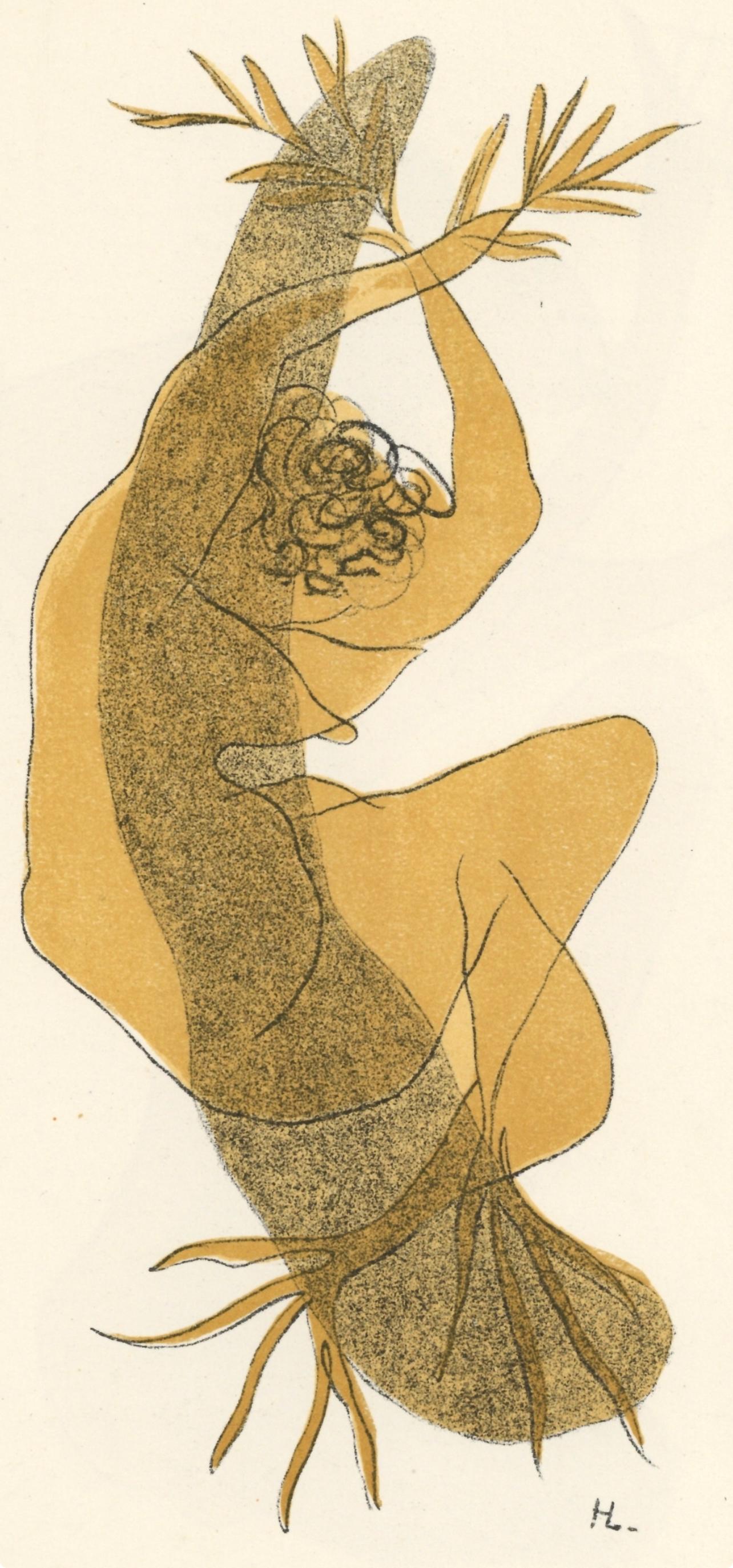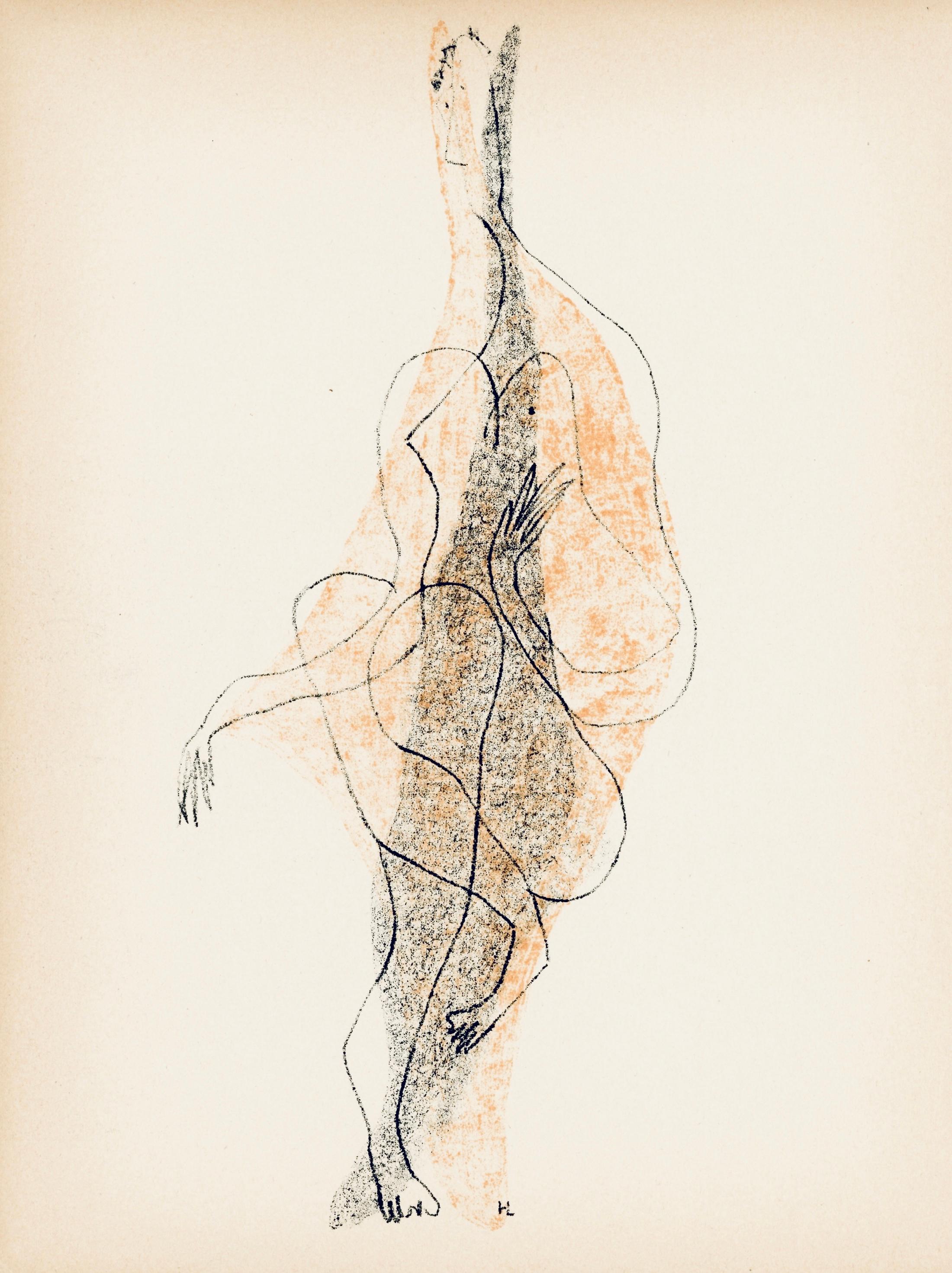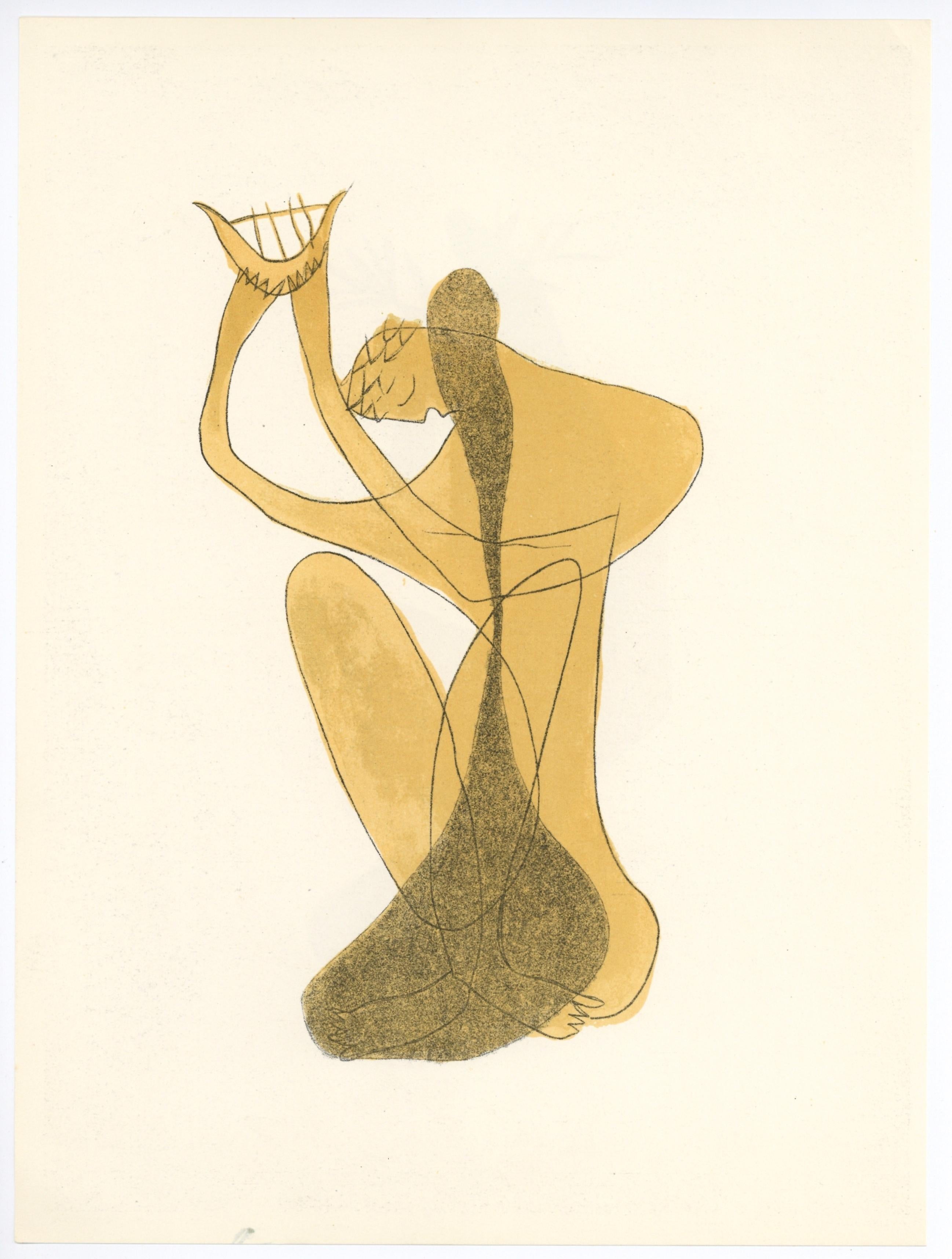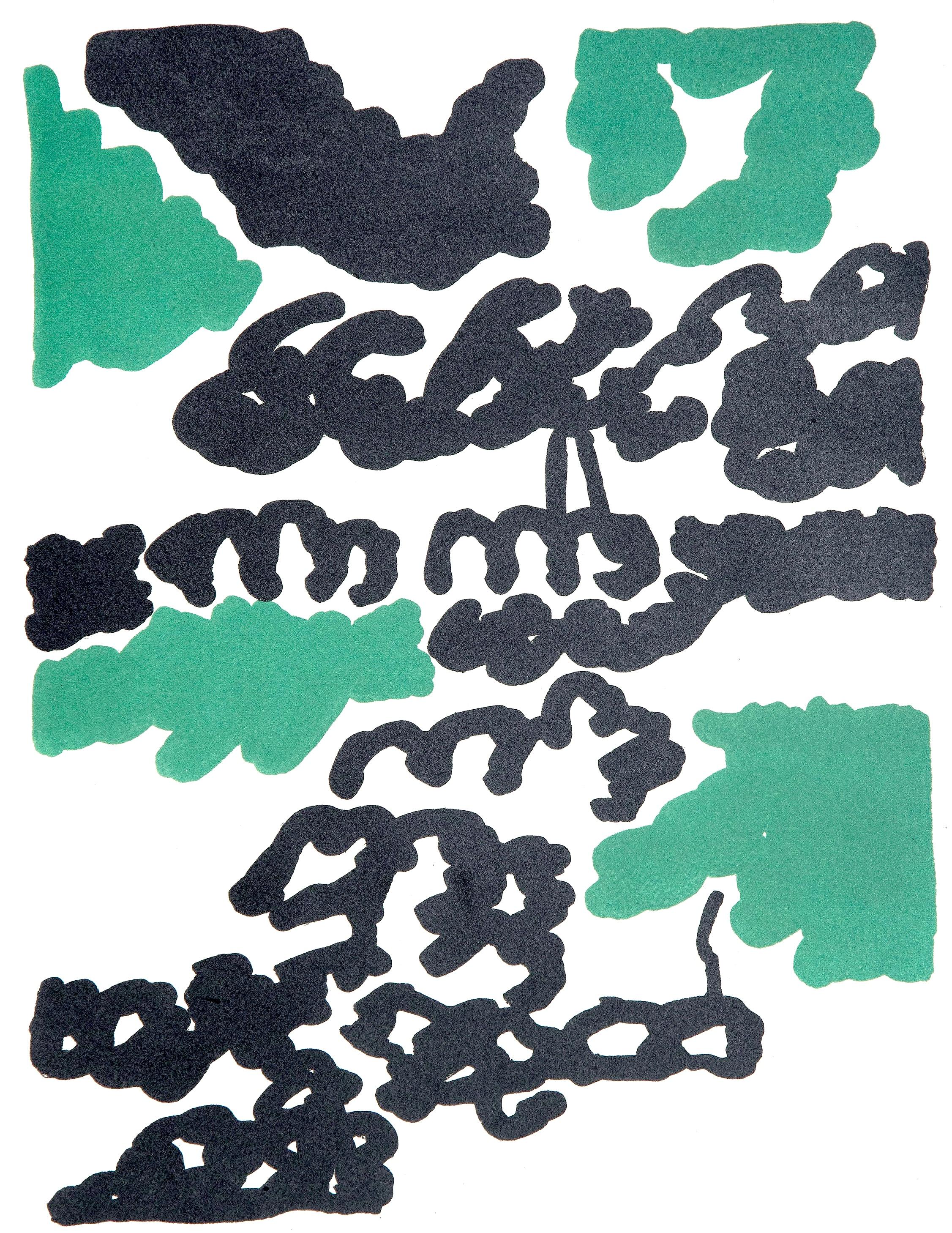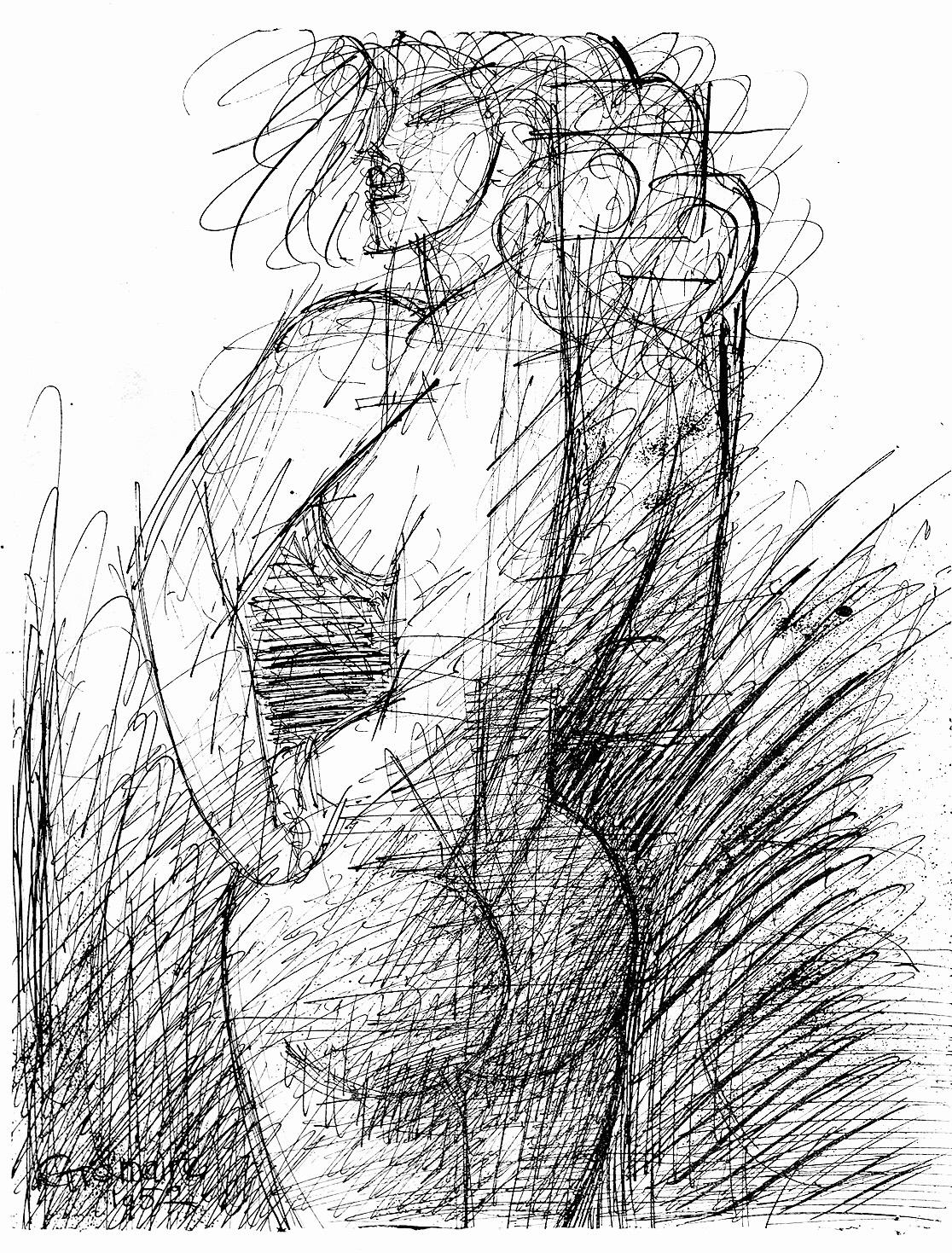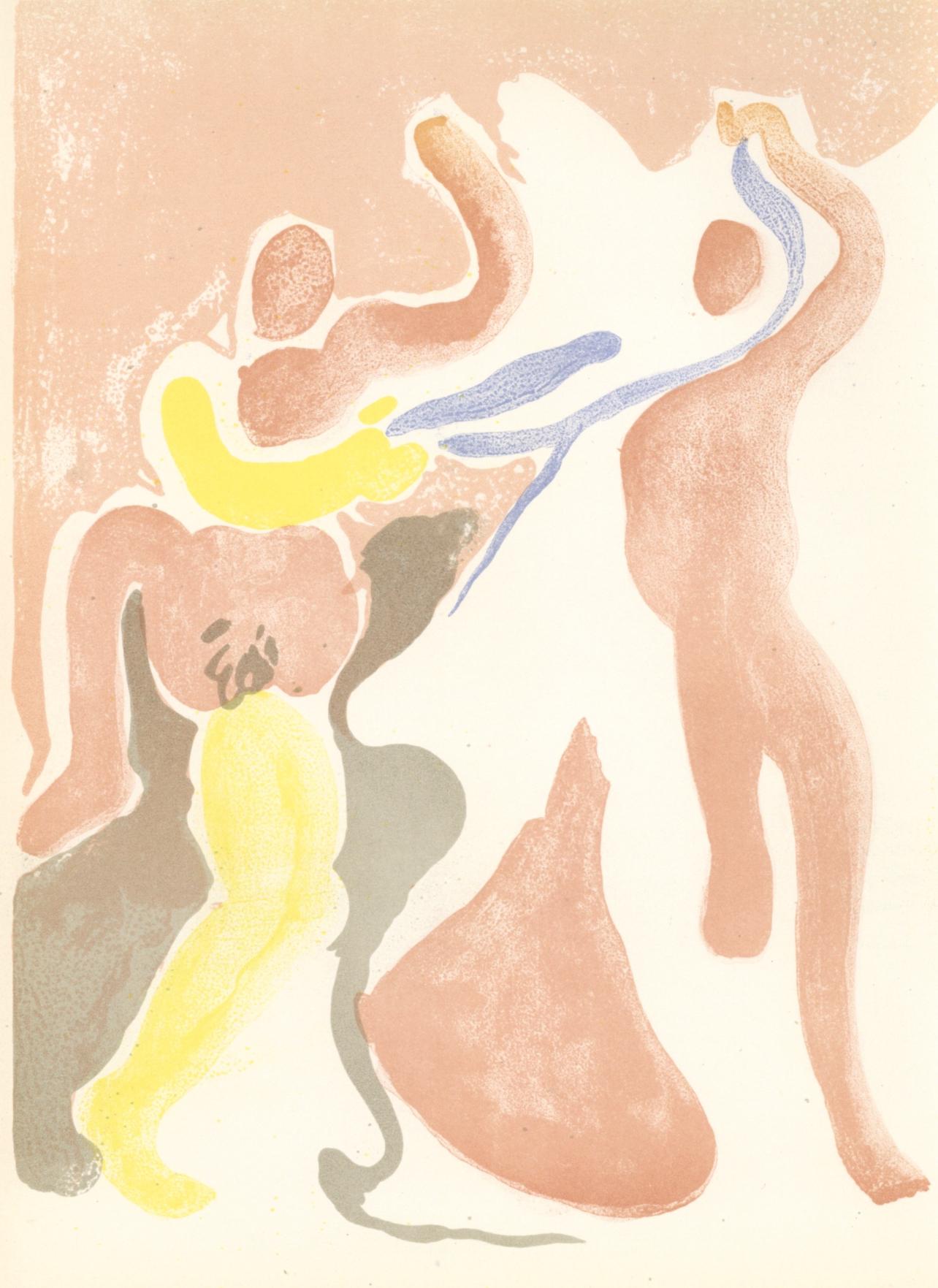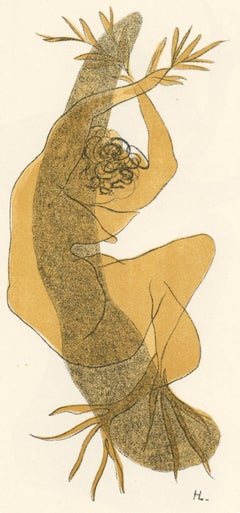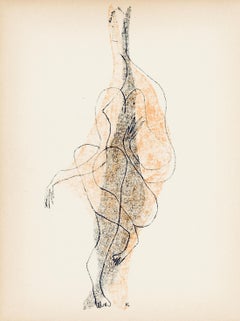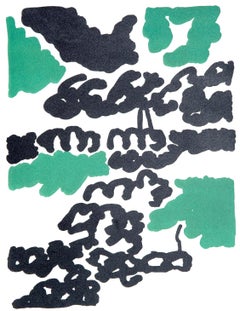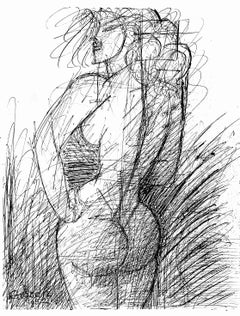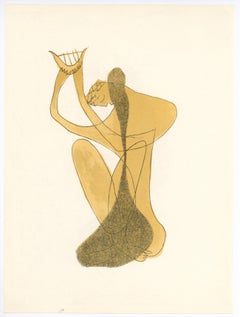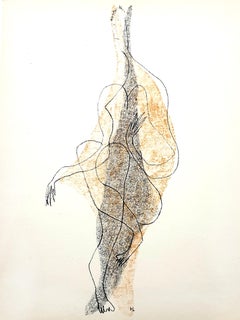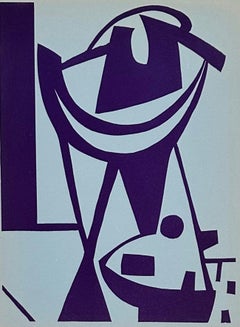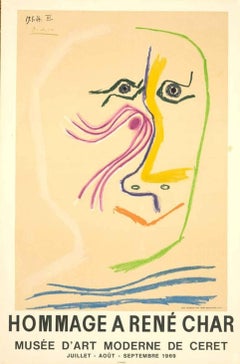Lithographie sur papier vélin des Papeteries du Marais. Taille du papier : 14 x 10.25 pouces. Inscription : Non signé et non numéroté, tel que publié. Notes : Extrait de l'album Verve : Revue Artistique et Littéraire, Vol. VII, N° 27-28, 1953. Publié par les Éditions de la revue Verve, Paris, sous la direction de Tériade, éditeur, Paris ; imprimé par Mourlot Frères, Paris, le 15 janvier 1953, dans un tirage de MM. Ce numéro double de Verve a été achevé d'imprimer le 15 janvier 1953 par Draeger pour la typographie et l'héliogravure et par Mourlot pour la lithographie. Notes complémentaires : Extrait de Poppy Sfakianaki, 'La revue Verve (1937-60) : Un tremplin pour la carrière de Tériade dans les éditions d'art', Journal of European Periodical Studies, 4.2 (Winter 2019), 70-89, En 1937, Tériade (1897-1983) rencontre David Smart (1892-1952), l'éditeur américain du magazine Esquire, qui lui propose de collaborer à la création du 'plus beau magazine du monde'. Smart reconnaît en Tériade non seulement ses capacités d'éditeur et ses connaissances en histoire de l'art, mais aussi son réseau professionnel et le nom qu'il s'est fait dans le monde de l'art parisien, autant d'atouts cruciaux pour une entreprise éditoriale. Ayant eu la conviction commerciale que la beauté "fait vendre", Smart entendait s'adresser au public américain, attiré par l'art français, y compris l'art moderne, et le mythe de la vie artistique à Paris. Pour sa part, Tériade voit dans cette Collaboration l'occasion d'une incursion sur le marché américain, puissant allié de l'art moderne en France. Les Éditions de la Revue Verve ont été fondées en novembre 1937, financées en grande partie par Smart, et dirigées par Tériade. Verve : Revue Artistique et Littéraire était une publication artistique luxueuse et ambitieuse, publiée non seulement en français, mais aussi en anglais dans les premières années, et distribuée en Europe et aux États-Unis. Sa configuration rappelle celle des revues françaises Cahiers d'art, Minotaure et Arts et métiers graphiques, ainsi que celle de la revue d'art américaine Coronet. Cependant, Verve était supérieur à la concurrence en raison de son iconographie abondante et de sa grande qualité d'impression. Son prix variait entre 60 et 150 francs (pour les numéros doubles) avant la guerre, et entre 120 et 350 francs pendant la guerre. Compte tenu de son prix élevé, le magazine s'adressait principalement aux marchands d'art, aux collectionneurs, aux bibliophiles et aux amateurs d'art fortunés. L'esthétique raffinée de la revue est due à son rédacteur en chef, Tériade, qui a cherché à développer une plate-forme de dialogue entre l'image et le texte, les arts visuels et la littérature. La dominante de chaque numéro reste son iconographie, composée de reproductions d'œuvres d'artistes modernes que Tériade admirait, et de " maîtres ", principalement de la tradition française, à côté de photos et de miniatures de manuscrits médiévaux. Tériade a sans doute réalisé avec sa revue une idée exprimée en 1934 selon laquelle les livres servaient de "musée idéal" ou d'exposition où sont rassemblés tous les chefs-d'œuvre artistiques, que Malraux développera plus tard dans Le Musée imaginaire (Genève : Skira, 1947), dont certaines parties paraîtront dans Verve. Pendant la Seconde Guerre mondiale, la périodicité de la revue a changé, devenant irrégulière, et la nature des sujets traités moins variée. Ainsi, les numéros publiés pendant la guerre (ainsi qu'en 1945 et 1946) sont exclusivement consacrés à la reproduction d'enluminures médiévales. Enfin, les numéros spéciaux de l'après-guerre présentent chacun la production récente d'un peintre d'art moderne. Seuls les numéros 8 (1940) et 27-28 (1952) font exception avec un résumé plus varié. L'accueil de Verve a été positif, comme en témoignent plusieurs articles de presse élogieux tout au long de sa diffusion. Le succès de la revue, la passion de Tériade pour l'art moderne et les manuscrits médiévaux, son admiration pour les publications d'Ambroise Vollard et d'Albert Skira, sa connaissance du monde des bibliophiles, l'amènent bientôt à amplifier son activité éditoriale. En 1943, malgré les difficultés pratiques imposées par la guerre, paraît son premier livre d'artiste, écrit et illustré par Georges Rouault. Jusqu'en 1975, Tériade publie aux Éditions de la Revue Verve, neuf livres d'artistes modernes, tels que Henri Matisse, Pablo Picasso, Marc Chagall, Joan Miró, entièrement composés (texte et images) par les artistes ; dix-sept livres illustrés par des artistes modernes reconnus ; un album de lithographies de Fernand Léger sur Paris ; deux albums photographiques d'Henri Cartier-Bresson ; deux monographies des artistes André Beaudin et Francisco Borès ; une luxueuse série de reproductions d'enluminures médiévales ; et une série de portfolios sur la grande architecture française. En définitive, l'étude comparative de la revue et des éditions de Verve : Revue Artistique et Littéraire illustre l'importance de la dynamique relationnelle tacite qui résulte des relations de collaboration et d'échange de capital symbolique fondées sur des perceptions et des intérêts communs, ainsi que sur des sentiments d'amitié et d'appréciation mutuelles d'acteurs du monde de l'art qui partagent une culture visuelle et bibliophilique et contribuent ainsi au succès de la revue et de la maison d'édition.
HENRI LAURENS (1885-1954) est un sculpteur et illustrateur français. Artistics est attiré par un nouveau rassemblement de créativité artistique à Montparnasse. À partir de 1915, il commence à sculpter dans le style cubiste après avoir rencontré Pablo Picasso, Georges Braque, Juan Gris et Fernand Léger. Polyvalente, Laurens a travaillé avec de la peinture sur affiche et des collages. Il était graveur et créait des décors de théâtre. En 1915, il illustre un livre pour son ami, l'écrivain Pierre Reverdy. En 1937, il reçoit le prix Helena Rubinstein, ce qui lui vaut de nouvelles commandes. En 1938, il partage avec Braque et Picasso une exposition qui fait le tour des grandes villes scandinaves. En 1947, il réalise des gravures pour l'illustration de livres. En 1948, il expose ses œuvres à l'importante biennale internationale de Venise. La même année, il expose à la Galerie d'Art Moderne de Bâle, en Suisse. Nombre de ses sculptures sont des objets massifs. Un exemple de ce style est la pièce monumentale L'Amphion, qu'il a d'abord conçue à plus petite échelle avant de créer la version finale en 1952 pour l'Université centrale du Venezuela, à Caracas, à la demande de l'architecte Carlos Raúl Villanueva. L'œuvre sculpturale de Laurens a influencé le travail de l'architecte Jørn Utzon, célèbre pour l'Opéra de Sydney, en particulier la tombe de Laurens pour un aviateur conçue pour le cimetière de Montparnasse, à Paris, en 1924.
